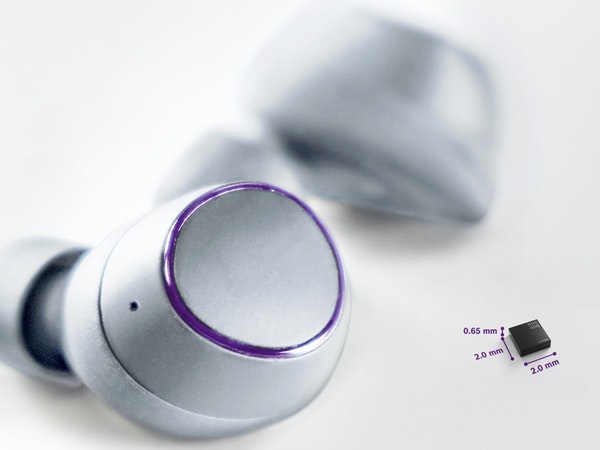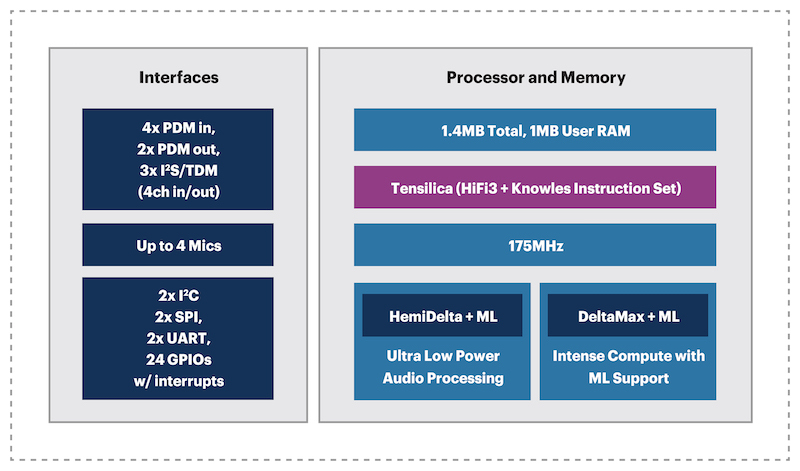Low-power components, voice
activation platforms and development kits enable designers to create
wireless earbuds, hearing aids, and smart headsets operating on small
batteries.
Hearables are becoming a growing presence in the
wearable design space amid the availability of low-power components,
voice assistants, and development kits that allow ultra-compact devices
operating on tiny batteries to deliver louder, crisper and richer sound.Bosch Sensortec, for instance, is going to demonstrate a new variant of its BMA456 accelerometer for hearable designs at the Sensors Expo & Conference held in San Jose, California on 25-27 June 2019. It integrates hearable-specific gestures for intuitive user interactions such as tap, double-tap and triple-tap, and it allows users to control playback, manage the volume, and accept and decline calls.
Bosch’s new motion sensor includes a low-power step counter and step detector that are specifically optimized for hearable designs. Moreover, activity recognition function enables the sensing device to detect walking, running, and standing still positions.

Hearables can initiate voice assistant systems to sense body movements and head gestures. Image from Bosch Sensortec
The BMA456 accelerometer accurately distinguishes between motion and no-motion while switching itself and the hearable device to a low-power mode. Next, it enables low-power in-ear and out-of-ear recognition, which in turn, instantly pauses playback when the user removes the hearable from the ear and sets the entire system to sleep mode. It also allows the sensor to eliminate the need to wake up the power-hungry application processor.
Bosch is targeting the new accelerometer at the Truly Wireless Stereo (TWS) headsets and mid-range hearables such as hearing aids and standard or sports earbuds. According to SAR Insight & Consulting, the market for the TWE headsets is forecast to grow to almost 180 million units by 2023.
Hearable Reference Design
Besides components for hearable designs, we are starting to see the availability of development kits for headphones, headsets, and wireless earbuds. These reference designs allow headsets and hearables to quickly integrate voice control platforms like Alexa to play music, access calls, and utilize specialized skills.Take the example of SmartMic Development Kit from Knowles that connects designs to the Alexa Voice Service (AVS) via the Alexa app for Android and iOS. The kit includes the company’s AISonic microphone that is based on a low-power audio edge processor.

The block diagram of the AISonicTM family of audio edge processor. Image from Knowles
The microphone performs wake-word detection, identification of the voice wake-word, and local voice command processing. It interfaces to Knowles’ Bluetooth chip—the Bestechnic BES2000i system-on-chip (SoC)—that controls overall headset functionality and provides Bluetooth low energy (BLE) connectivity.
Then, there is Retune DSP VoiceSpot™ technology that provides the voice trigger and commands in the SmartMic Development Kit platform. Knowles claims that its development kit enables headset and hearable designs to minimize acoustic background distractors such as car noise, restaurant and bar babble, and street noise.
Bluetooth accessories are growing rapidly, and the availability of components and development kits for wireless earbuds and over-the-ear headsets enable developers to quickly create designs that can operate in noisy environments without distortion.






No comments:
Post a Comment